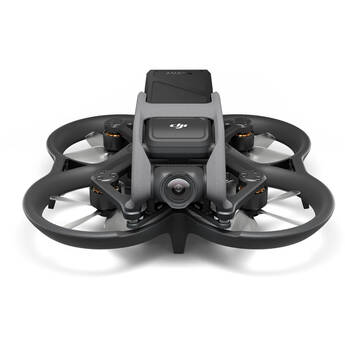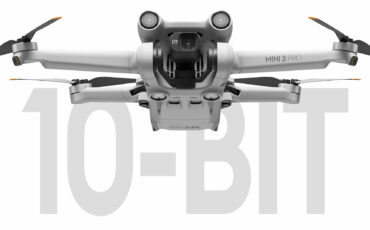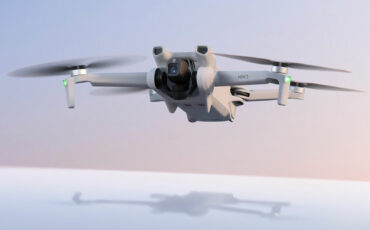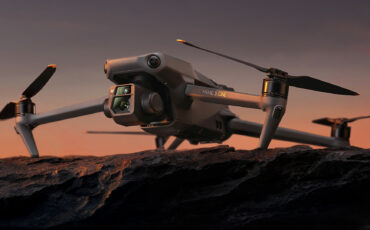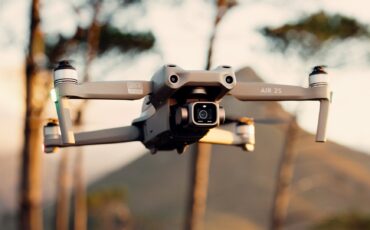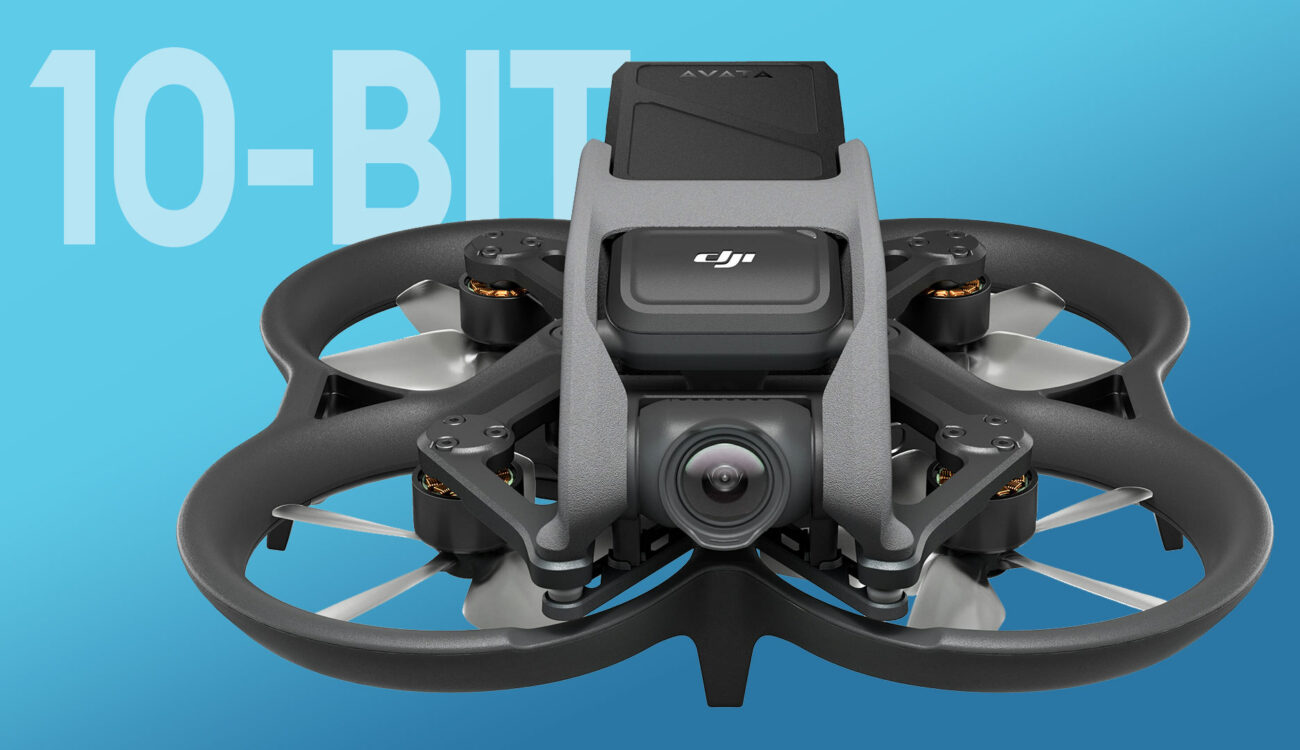
DJI Avata recently got a firmware update that upgrades the D-Cinelike H.265 video recording mode with 10-bit color (up to 4K UHD 60fps). Other improvements include the ability to set sharpness and noise reduction parameters for video recording, the ability to cancel the countdown for low-battery RTH by pressing the brake button, the ability to transfer data from the aircraft storage to the microSD card, and more. Let’s take a closer look at all these updates!
Please note, that the new Remote ID will require pilots in the USA to have their phones with GPS location tethered to the goggles.
DJI’s latest FPV drone – the DJI Avata, and the new DJI Goggles 2 were announced in August 2022. The drone brought a new camera and a much more compact, lightweight, and rugged body compared to the first DJI FPV drone. Recently, DJI also announced the O3 Air Unit which uses the same camera as the Avata and can be used to build custom FPV quads. At the same time, the company also announced the availability of the Goggles 2 as a separate product.
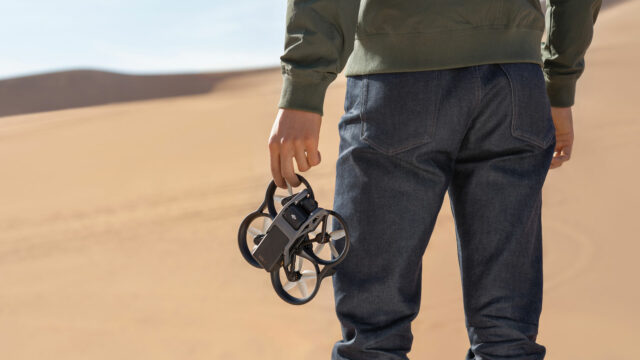
Just like with the Mini 3 Pro, the camera of the DJI Avata now also gets a 10-bit color and a few other new features and improvements with the recently released firmware update.
Philip Bloom's Cinematic Masterclass
DJI Avata firmware update v1.02
The new firmware was released on December 8, 2022, and the versions for all the devices are numbered in the following manner:
- aircraft firmware: v01.02.0000
- goggles firmware: v01.03.0000 (DJI Goggles 2), v01.05.0000 (DJI FPV Goggles V2)
- motion controller firmware: v02.00.0500
- remote controller firmware: v02.00.0400
- DJI Fly app (both iOS and Android): v1.8.0
The most notable addition in my opinion is the 10-bit color, but other new features also sound useful. For instance, it is now possible to set sharpness and noise reduction parameters for video recording. With the 10-bit H.265 recording, DJI did not specify which subsampling they are using, but like in the case of the DJI Mini 3 Pro, I suppose it is 4:2:0.
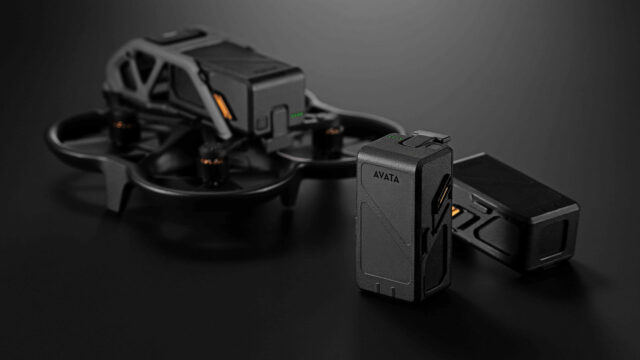
Furthermore, Avata will now have the ability to cancel the countdown for low-battery RTH by pressing the brake button. It will also be possible to transfer data from the aircraft storage to the microSD card.
The full list of new features and improvements is as follows:
- Added support for Remote ID requirements in the United States.
- Added ability to detect abnormal attitude and brake automatically when the aircraft turns sharply at high speed with an altitude of more than 5 m in Manual mode.
- Added ability to cancel the countdown for low battery RTH by pressing the brake button.
- Added support for the aircraft to record video at 4K@30fps, 2.7K@30fps, and 1080p@30fps. When used with DJI Goggles 2, 2.7K@120fps and 1080p@120fps are also available.
- Added ability to transfer data from the aircraft storage to the microSD card. Go to Settings > Camera in the goggles menu to use this function.
- Added ability to set sharpness and noise reduction parameters. Go to Settings > Camera > Advanced Camera Settings in the goggles menu to set the parameters.
- Improved D-Cinelike to 10bit, providing more possibilities for post-processing.
- Optimized flight stability in some scenarios.
- Optimized the video transmission fluency in broadcast mode.
DJI also released important notes regarding the firmware update process:
- Restart the aircraft, remote controller, and goggles after the update is complete.
- Note that the update may reset various flight parameters such as the RTH altitude and the maximum flight distance. Before updating, take note of your preferred settings and readjust them after the update.
- If the update fails, restart the aircraft, remote controller, goggles, and DJI Fly or DJI Assistant 2 (consumer drones series) and try again.
Remote ID requirements in the US
The first new addition in the new firmware – the support for Remote ID requirements in the United States – is currently making rounds on social media and online forums. It seems that when flying in the US, the FAA requires any drone to know and report the location of the pilot at any time. When flying other DJI drones, the remote or the connected phone has to have GPS location turned on so that is not an issue.
With the DJI Avata, however, both the goggles and the controller do not have a GPS module, so the Remote ID now requires a phone with the DJI Fly app to be tethered to the goggles during the whole flight. This inconvenience came with the new firmware for the drone and the goggles, but it seems that it is possible to return to the previous version of the firmware – at least for now. With this requirement, DJI is only complying with the FAA rules and pilots outside of the US are not affected by this.
Let’s hope this will be handled better in the future – for instance by adding a built-in GPS location module to the goggles. What do you think about this? Can you confirm this if you fly Avata in the USA?
Is 10-bit coming to DJI O3 Air Unit as well?
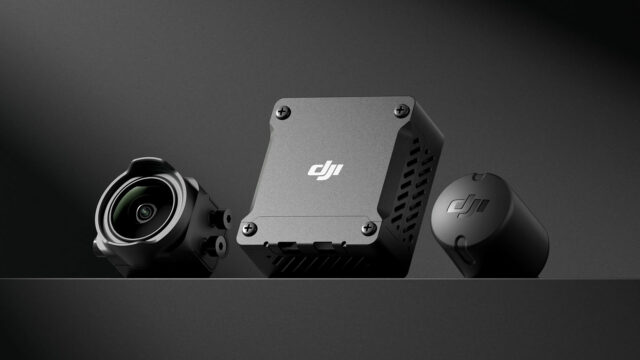
When it comes to DJI O3 Air Unit, the company never exactly specified in which codec, color, or subsampling the unit’s camera can record. The technical specs only state the resolution, framerate, and that an MP4 container is used. Seeing now that the same camera of the Avata can record in H.265 10-bit with D-Cinelike, it would be nice to see the same update coming to the O3 Air Unit as well. What do you think? Let us know in the comments!
Price and availability
As usual, the firmware update mentioned above is available via the DJI Fly app free of charge. DJI Avata currently sells for $629 (around €580 including VAT in Europe) in the drone-only configuration. The bundles with goggles and the motion controller start at $1,168 (around €1,150 including VAT in Europe).
Do you have experience flying with the DJI Avata? Do you find the image quality coming from Avata sufficient? Let us know your thoughts in the comments section below.



